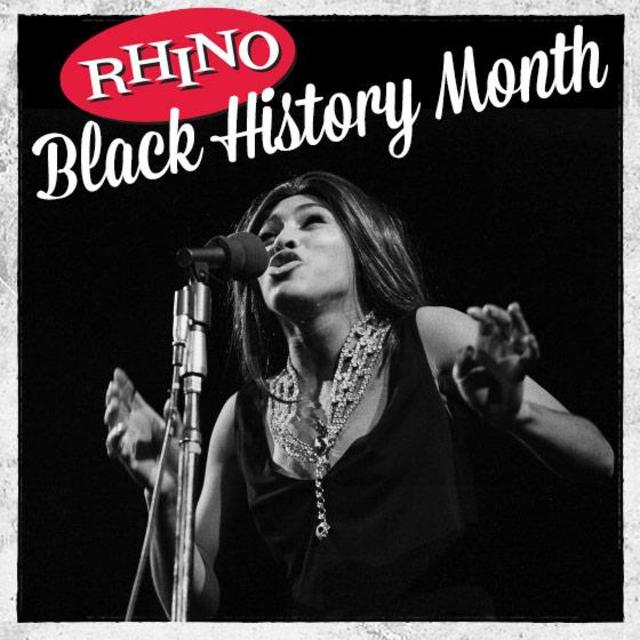Rhino Black History Month: Tina Turner

Tina Turner is an artist for whom the term “multi-generational” is highly apt: she became a superstar in the ‘60s, watched her spotlight dim somewhat as she suffered through the ‘70s, but then experienced such a profound career resurgence in the 1980s that she’s remained on the radar ever since.
Born in Nutbush, Tennessee on November 26, 1939, Anna Mae Bullock – a.k.a. the future Ms. Turner, if you hadn’t guessed – didn’t exactly have a picture-perfect childhood, spending much of her youth living with her grandparents, at first due to her parents working at a defense facility during World War II, then as a result of her mother abandoning the family in an effort to escape her abusive husband. In 1957, however, Anna Mae met the man who would change her life, both in good ways and bad: Ike Turner.
Ike and Anna Mae were married in 1960 (although Ike often claimed otherwise), with Ike renaming his new spouse “Tina” – reportedly because it rhymed with “Sheena,” as in “of the Jungle,” one of his favorite TV series – and embarked on a musical career together that would produce such hits as “A Fool in Love,” “It’s Gonna Work Out Fine,” “Proud Mary,” and, in a tribute to her birthplace, “Nutbush City Limits.” Although Tina’s live performances quickly became a thing of legend, her relationship with Ike was volatile, to put it mildly, as was famously dramatized in the 1993 film, What’s Love Got to Do with It. By 1976, weary of the abuse she’d suffered at Ike’s hand, Tina divorced Ike and entered into a career slump that would last for the better part of a decade.
All that changed in 1984, however, with the release of the Private Dancer album. With the Ike era well in her rear view mirror, Tina took her famously long legs and strutted her way up the charts, with the album hitting #3 and pulling a trio of top-10 singles: “What’s Love Got to Do With It,” “Better Be Good to Me,” and “Private Dancer.” With her profile higher than ever, Turner also earned a role in the film Mad Max Beyond Thunderdome while also contributing to the soundtrack and scoring two significant hits with “We Don’t Need Another Hero” (#2) and “One of the Living (#15). Back in business in a big way, Turner continued her chart reign, with the follow-up album, Break Every Rule, making it to #4.
While her three subsequent studio albums – Foreign Affair (1989), Wildest Dreams (1996), and Twenty-Four Seven (1999) – haven’t had quite the same level of success, Turner’s comeback was so substantial that everything she’s done since has earned significant coverage by the media. Plus, let’s not forget that she did a Bond theme in 1995 (“GoldenEye”), which is a major achievement by anyone’s pop culture standards. Although she announced in the wake of touring behind Twenty-Four Seven that she was going into semi-retirement, Turner returned to the stage in 2008 for a 50th-anniversary tour and has been more or less quiet since it wrapped, but there are recurring rumors that she’s gone into the studio to record again….and we’re guessing you’re hoping just as hard as we are that those rumors turn out to be true.


